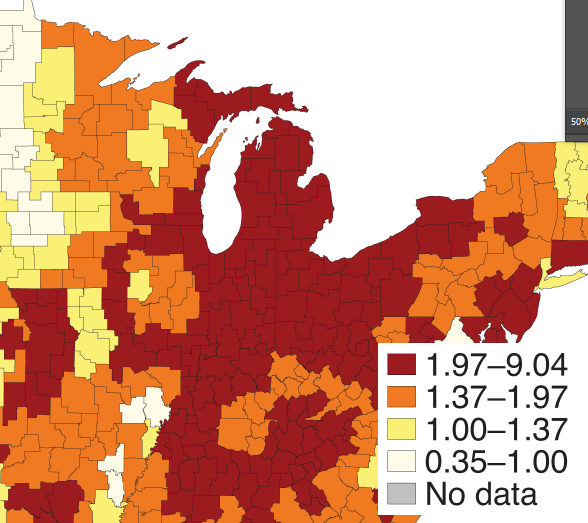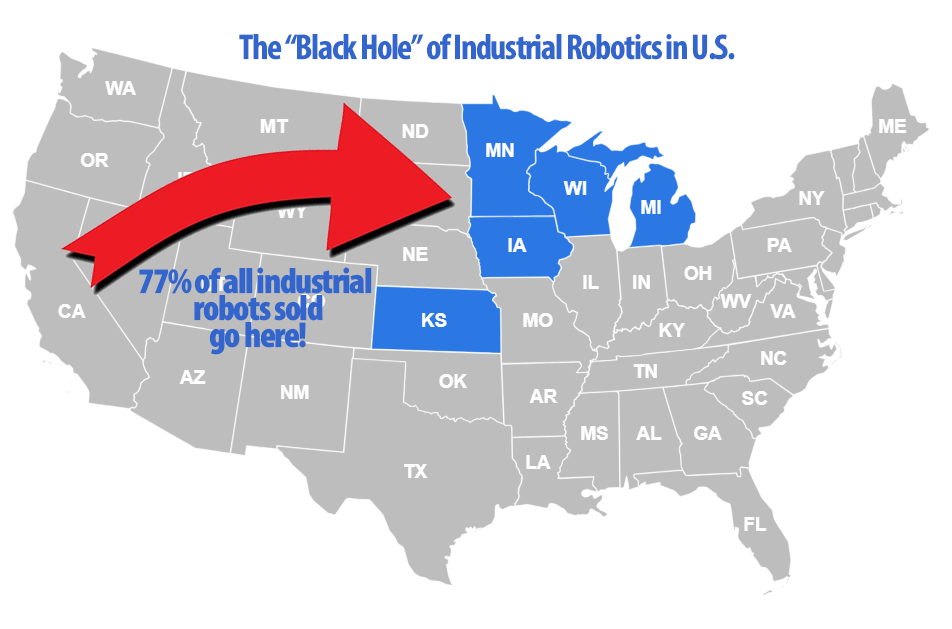
New Study Links: “Factory Automation With Excess Mortality”
Death by Robots!?
Somber new research: “Industrial Robots and Population Health: A Deadly Mix.”
The “deadly mix”
There’s new research circulating that traces the effects of factory automation with the health, welfare, and mortality of workers displaced by robots.
The research appears in multiple well-respected journals, each with its own scary headline, like these: Demography: Death by Robots? Automation and Working-Age Mortality in the United States; and University of Pennsylvania: Industrial Robots and Population Health: A DeadlyMix.
Basically, the researchers looked at the relationship between the adoption of industrial robots and the safety, health, and well-being of those workers replaced by robots.
“Death by Robots? Automation and Working-Age Mortality in the United States” — found that steadily increasing factory automation from 1993 to 2007 led to “substantive increases in all-cause mortality for both men and women aged 45–54.” This included increases in drug overdose deaths, suicide, homicide, and cardiovascular mortality.
Just to repeat for emphasis: “Increases in drug overdose deaths, suicide, homicide, and cardiovascular mortality.”
So, after a worker gets his or her exit interview and X amount of weeks of state unemployment benefits, there’s an entire scary universe of potential calamities waiting on the neighborhood streets.
And more than a few succumb to those perils.
“In much the same way that studies have long analyzed how industrial robots decrease costs and boost profits for business, this emerging new field of study is analyzing the non-obvious degree to which those same changes negatively impact the health and well-being of the displaced humans as well as their communities.”
Deaths of despair
The deaths brought on by suicide, drug overdoses, and heart failure, the researchers have tabbed as “deaths of despair”. Factory work, long the avenue to attaining a middle-class lifestyle, once abruptly closed via automation, can be deadly to those dispossessed.
The research team “noted the lost jobs were most often those of less educated workers. They point to the subsequent “material pathways” through which the negative effects of robot displacements manifest for ousted workers. This includes loss of employment, wages, and access to health care, along with the reduction of a region’s future economic opportunities, and the continual elevated mental stress inherent in all those situations.
“The study data indicates each additional robot added per 1,000 factory workers resulted in eight additional deaths per 100,000 males aged 45 to 54, and four additional deaths per 100,000 females in that same age group.
“The findings also estimate that an overall increase of 12% in drug overdose mortality occurred among all working-age adults in the 1993-2007 period of the study. At the same time, researchers found that “the generosity of state safety-net programs — Medicaid and unemployment insurance — mitigated the effect of automation on mortality among middle-aged males, specifically deaths due to suicide and drug overdose.”
The researchers also produced a map of the U.S. showing the geographic area where these “suicides, drug overdoses, and heart failures” predominate (see map). Curiously, the predominating area almost exactly aligns with the five states (Iowa, Michigan, Kansas, Wisconsin, and Minnesota) from our previous article on America’s Robot Hubs; the five states that receive 77% of robots sold in America.
Further, this part of the U.S. is nearly the same geographic area from the research we previously published from The Century Foundation’s How Robots Are Beginning to Affect Workers and Their Wages (2019)
Is that then the beachhead?
This combined research is pointing to an area, let’s call it the beachhead, where the U.S., the individual states, and concerned industries together can marshal resources to deal with the effects of automation on the impacted populations. This geographic area might well become the test case of how to effectively deal with automation throughout the country as robot-driven automation advances into the other 45 states.

As we all realize, automation is coming to all of us. Automation is inevitable; retraining and reskilling need to be just as inevitable.



